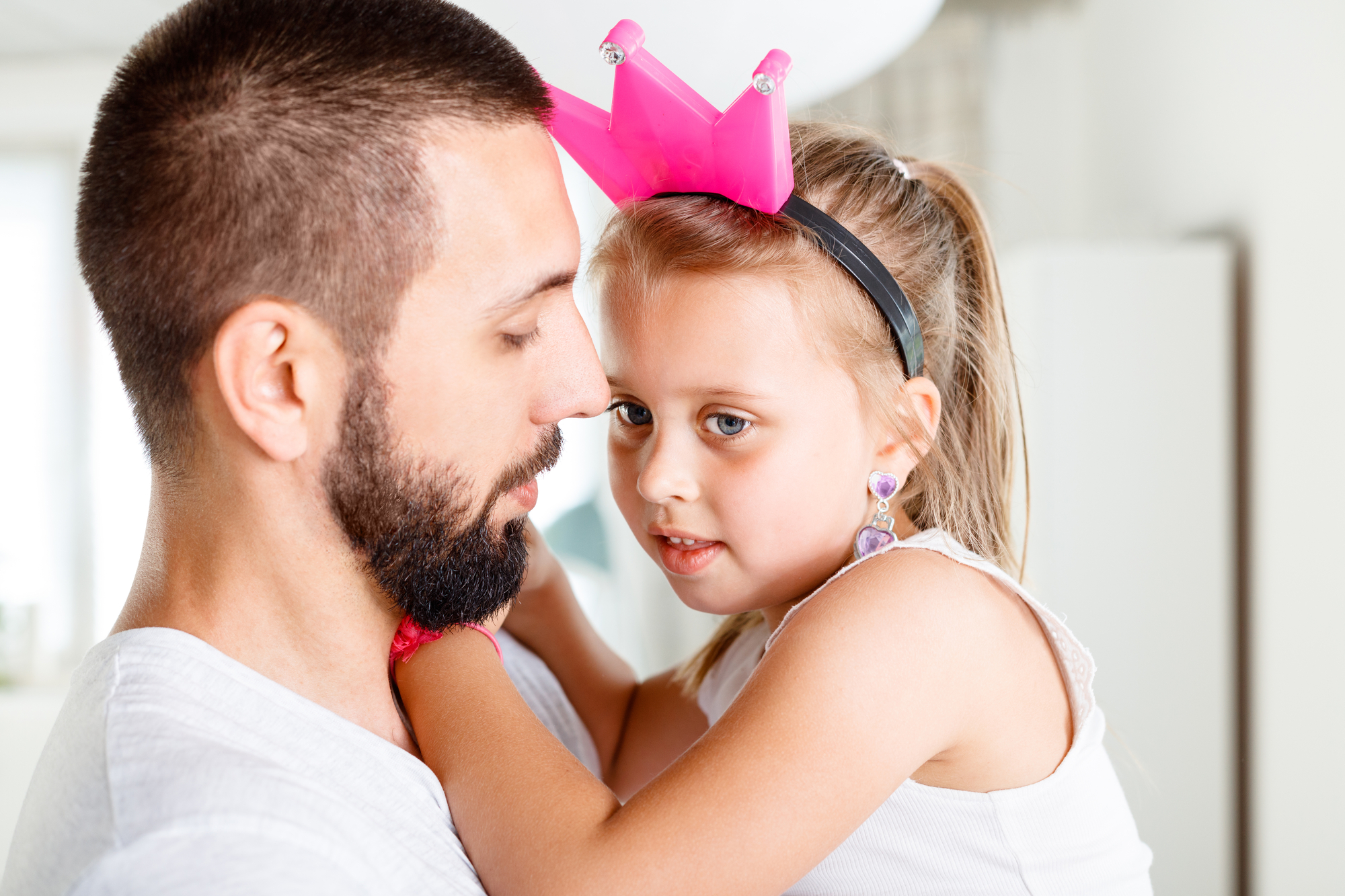With the world looking very different and the future uncertain, you might be surprised to find that your children are likely just as worried. Children will always look to the adults in their lives for cues as to whether they need to be afraid or not.
A great example of this is when you meet an old friend who your child has never met. They may stand back, much closer to you, for the first few moments while they look to you for your response. Wondering, ‘Is Mum or Dad happy to see this person?’ or, ‘Are they nervous about seeing this person?’ or, ‘Are they angry with this person?’
Once your child realizes it’s all okay, they too will relax.
So, what do we do when even the adults are worried?
1. Be mindful of how and when you discuss COVID-19-19
As a mother of a ‘stealth-eavesdropper,’ it’s crucial that I always keep in mind how and when I talk about the COVID-19-19 crisis.
Don’t fall into the trap of thinking your child is too young to understand. They might be too young to understand what you’re saying but they are certainly able to understand that something big and scary is happening.
If you’re having lots of conversations with other adults about the pandemic, be sure that you find a private place away from the children to have these conversations.
2. Don’t wait for your child to ask you about it
The truth is, your kids probably already know something is going on, and not having the reassurance from their significant adults will only cause more stress and anxiety for them. In my practice as a nurse as well as a mother, I like to use various tools to help sift through the information and emotions my kids are feeling. Some great tools I use include:
A puppet/doll to talk to them (children aged 1-8 years)
You will be amazed at how much information you get from your child or get across to your child through a puppet!
If you choose to try the puppet, keep it simple.
Work on just two messages at a time and keep coming back to the puppet/doll every so often to give them some more things to ponder.
For example, you might start with the puppet asking if they know about Coronavirus and then asking what they know about it. When they offer up their thoughts, notice if any misinformation or fears are coming through in their language.
Acknowledge the fears, reassure them, and correct any misinformation.
This is also a good time to talk about how the adults in their life will help keep them safe and stress the importance that they can help by washing their hands and singing a song while they do it.
Children aged 5 to 8 years:
I love this downloadable, free resource written by a Certified Child Life Specialist, Manuela Molina Cruz, from Mindheart. It’s an excellent resource for parents wanting to explain the virus in language that children understand while also addressing their emotions in a non-confronting way.
3. Be honest
Kids have amazing lie detectors built into their systems. If they’re hearing you talk about the virus and the economic situation a lot and then you’re telling them that ‘it’s nothing to be worried about, dear!’, they’ll see right through it and it will only feed their anxieties more.
Your child needs to know they can rely on you so, practicing honesty without alarming them, is an art that you will need to master.
Go gently and offer only enough information to answer their questions. Use age-appropriate language and watch their reactions for any underlying anxiety.
4. Talk about it through play
“Play gives children a chance to practice what they are learning.” -Mr. Rogers
Play is also a great stress relief for children. It’s challenging to be playful when you’re angry, sad, or fearful. If your child is showing these emotions, play is a great way to dissolve these emotions and address them. When I’ve worked with children in my nursing practice around their fear of needles, I’ve used play to help them work through it.
You can try using their favourite teddy bear or stuffed animal and role play going to the Doctor’s for a sore throat. Talk to their teddy as though they are a real person and use the whisper technique to negotiate the direction of the play with your child or when asking open questions by starting with ‘I wonder.’ For example, you might whisper, ‘Should he/she have a runny nose too?’ or ‘I wonder how teddy feels about seeing the Doctor in his mask and hat?’ If your child says that teddy is scared, you can use a soothing, reassuring voice that you will look after teddy and ensure that teddy is safe, the Doctor is wearing all those things to make sure that he doesn’t get sick too.
Lastly, if your child seems to be disengaged with the game, stop pushing for the conversation and instead allow them to direct the play. If the game they want to play is not focussed on COVID-19-19, that’s okay! They will be getting the much-needed focus and attention from you regardless which will be invaluable in releasing some stress.
5. Finish on a positive note
When it’s time to finish the conversation or play time, observe your child for any signs of distress or anxiety. Watch their body language and observe them for any tension or changes in their breathing- they might be holding their breath or breathing faster.
If they’re looking tense, try some rough and tumble play to help ease the tension. A favourite in our household is the old-fashioned pillow fight where I let my kids dominate me and win. This can get the laughter happening, but it can also release the tears so be ready to stop and listen to them. You don’t have to stop their laughter or tears, just hold that space for them and reassure them that you’re there to listen and comfort them.
6. Look after yourself
One of the most important things you can do for your child is to look after your own mental well-being. If you’re finding the whole situation stressful, try having some boundaries around watching the news and ensure that you’re taking some time out for yourself.
I’ve been making a point of meditating for 10 minutes each day because I too have been feeling overwhelmed by what’s ahead. Some other things I plan to implement as we socially distance ourselves more is to participate in some online yoga and fitness classes as well as get out into the garden and plant some new veggies with the kids.
These times are uncertain so make sure you look after yourself and communicate with honesty with your children.
 Brooke Batchelor is a Paediatric Registered Nurse, qualified Primary Teacher, children’s advocate and author. She founded ‘The Paediatric Nurse’ website in 2015 before developing it into an online continuing professional development website for Paediatric Nurses in August 2018.
Brooke Batchelor is a Paediatric Registered Nurse, qualified Primary Teacher, children’s advocate and author. She founded ‘The Paediatric Nurse’ website in 2015 before developing it into an online continuing professional development website for Paediatric Nurses in August 2018.
She is passionate about giving children a voice in healthcare and works tirelessly towards encouraging others to further develop their child and family-centred care approaches.
Brooke his currently a member of the Advisory Board for the Standish Foundation – a charitable organisation that promotes child & family centred care and empowers healthcare professionals through the provision of funding & resources.
Previously, Brooke also sat on the Board of Directors for the Association for the Well-being of Children in Healthcare, Australia and held the Vice President position in 2017.
In other roles, Brooke has taught undergraduate nurses and regularly delivers webinars to Paediatric Nurses with the aim to build upon the knowledge and skills of nurses the world over and in turn, improve paediatric healthcare outcomes.
When Brooke is not nursing or hosting webinars, she is spending quality time with her husband and two daughters or enjoying a yoga session with some essential oils & meditation thrown in.
This article is not to be reproduced without written permission from the writer, Brooke Batchelor.
You can contact the writer via brooke@thepaediatricnurse.com
You may also like to read:









